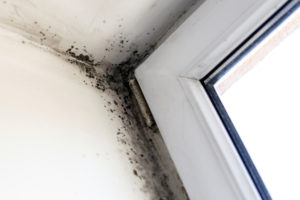ABBOTTS BLOG
Stop Mold and Mildew Once and For All (part 2 of 2)
 We recently began a discussion on the unfortunate but all-too-common problem of mold within the home (read part 1 here). More than an unsightly or smelly issue, mold can be very toxic and can cause significant damage to your health and property. After spending some time learning how to detect mold and understanding why it’s so important to address mold problems promptly, now you’re geared up and ready to get rid of the mold inside of your home. This post will tell you everything you need to know about getting rid of mold and making sure it doesn’t come back.
We recently began a discussion on the unfortunate but all-too-common problem of mold within the home (read part 1 here). More than an unsightly or smelly issue, mold can be very toxic and can cause significant damage to your health and property. After spending some time learning how to detect mold and understanding why it’s so important to address mold problems promptly, now you’re geared up and ready to get rid of the mold inside of your home. This post will tell you everything you need to know about getting rid of mold and making sure it doesn’t come back.
Mold Removal
When mold attacks your home, you’ve got to plan your counter-attack. The sooner you’re able to get to work on the problem, the less damage you are likely to be faced with and the less expensive your mold-tastrophe will be. These fast and effective tips will help you reclaim your home:
- Safety First – Don’t try to attack mold without taking the proper precautions. Wear a mask and gloves to prevent contact with mold spores, and work in an area that is well-ventilated. In enclosed spaces, make use of a box fan.
- Treat Surface Mold – Minor mold growths on walls and ceilings may be able to be treated with a brush, 1/2 cup of bleach, a quart of water, and a little bit of detergent. Do not under any circumstances mix bleach with any detergent or other product that includes ammonia, as this will create a poisonous gas.
- Major Mold Problems – If mold has gotten into your drywall or underneath your carpet, there’s not much you can do on your own. For safety reasons, it’s best to seek out a professional who is capable of dealing with large-scale mold and moisture problems.
Mold Prevention
After getting rid of your mold, you want to make sure that it never comes back to haunt you again. Here are a few smart tips for preventing mold growth in the future:
- Adjust Your Thermostat – During the summer, heat and humidity can create the temptation for you to constantly play with your thermostat settings. Unfortunately, if you set your thermostat too high, your A/C won’t properly dehumidify your home, while setting the temperature too low can cause cold, clammy conditions that allow moisture to accumulate and pool. 78 degrees is the perfect temperature for preventing mold growth.
- Use a Dehumidifier – If you don’t like the idea of running your A/C all the time, you might consider using a whole-home or in-room dehumidifier to get rid of excess moisture in the air.
- Bathroom Fans – Because bathrooms are often built without windows or other natural ventilation, it’s smart to equip the space with a ventilation system that can help evacuate steam and moisture away from these areas.
- Size Your A/C Properly – Did you know that installing an air conditioner that’s too large or too small for your home can reduce its ability to remove humidity and moisture from your home? Whenever you’re in the market for a new cooling system, it’s important that you have the unit properly sized for your space.
- Clean Regularly – Taking the time to clean and disinfect kitchen sinks, refrigerators, window sills, baseboards, and bathroom tiles that may be vulnerable to mold can actually prevent spores from ever growing.
Although mold is a pretty common problem in Colorado homes, it doesn’t have to plague you. Knowing how to identify, treat, and prevent mold will save you a lot of time and grief. If you need help evaluating your home for mold or water damage, or would like assistance in removing mold from your home, call the pros at Abbotts Fire & Flood today.

